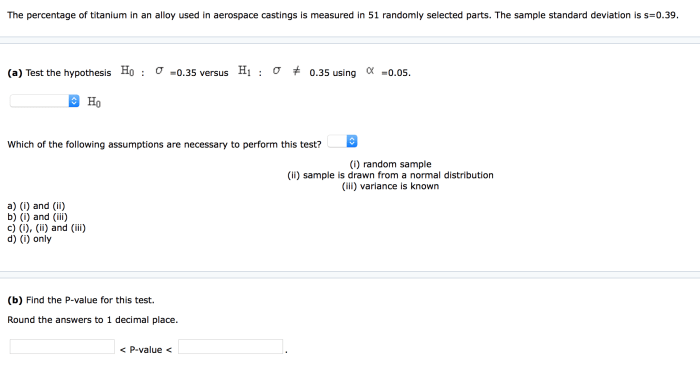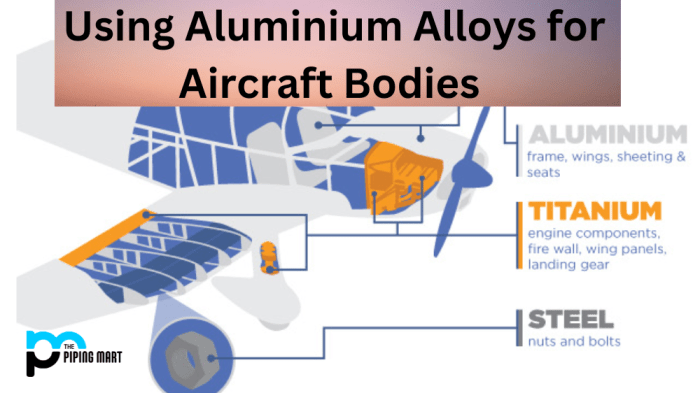The percentage of titanium in an alloy used in aerospace plays a crucial role in determining its properties and performance. Titanium alloys, renowned for their exceptional strength-to-weight ratio and corrosion resistance, are widely employed in various aerospace applications. This article delves into the significance of titanium in aerospace alloys, exploring its impact on alloy characteristics and the advantages and limitations of its usage in this demanding industry.
Titanium alloys are composed of titanium and other elements, such as aluminum, vanadium, and chromium, to enhance their properties. The percentage of titanium in the alloy directly influences its strength, ductility, and toughness. Higher titanium content generally results in increased strength and reduced ductility.
1. Definition and Properties of Titanium Alloys

Titanium alloys are metallic materials composed primarily of titanium, combined with other elements such as aluminum, vanadium, chromium, and iron. They exhibit exceptional strength-to-weight ratios, corrosion resistance, and high-temperature performance, making them ideal for demanding aerospace applications.
Key properties of titanium alloys include:
- High strength-to-weight ratio
- Excellent corrosion resistance
- Good high-temperature performance
- Low density
- Biocompatibility
2. Role of Titanium in Aerospace Alloys: The Percentage Of Titanium In An Alloy Used In Aerospace

The percentage of titanium in an aerospace alloy significantly influences its properties and performance. Higher titanium content generally enhances strength, corrosion resistance, and high-temperature performance, while lower titanium content improves ductility and weldability.
Commonly used titanium alloys in aerospace applications include:
- Ti-6Al-4V (6% aluminum, 4% vanadium)
- Ti-5Al-2.5Sn (5% aluminum, 2.5% tin)
- Ti-10V-2Fe-3Al (10% vanadium, 2% iron, 3% aluminum)
3. Applications of Titanium Alloys in Aerospace
Titanium alloys are widely used in various aerospace components and systems, including:
- Aircraft engines (compressor blades, fan blades)
- Airframes (fuselage panels, landing gear)
- Fasteners (bolts, nuts)
- Spacecraft (fuel tanks, rocket engines)
Advantages of using titanium alloys in aerospace applications:
- Lightweight and high strength
- Excellent corrosion resistance
- Good high-temperature performance
Limitations:
- High cost
- Difficult to machine and weld
4. Manufacturing and Processing of Titanium Alloys
Titanium alloys are typically manufactured through the following processes:
- Vacuum arc remelting (VAR)
- Plasma arc melting (PAM)
- Electron beam melting (EBM)
Processing of titanium alloys involves:
- Forging
- Rolling
- Extrusion
- Heat treatment
Challenges in processing titanium alloys:
- Reactivity with oxygen and nitrogen
- High melting point
5. Trends and Advancements in Titanium Alloy Development

Emerging trends in titanium alloy development for aerospace applications include:
- Development of new alloys with improved properties
- Additive manufacturing techniques
- Surface modification technologies
Potential benefits of these advancements:
- Reduced weight and increased performance
- Improved corrosion resistance
- Enhanced high-temperature performance
6. Comparison with Alternative Materials
Alternative materials used in aerospace applications include:
- Aluminum alloys
- Steel alloys
- Composite materials
Advantages of titanium alloys over alternative materials:
- Higher strength-to-weight ratio
- Better corrosion resistance
- Improved high-temperature performance
Disadvantages:
- Higher cost
- More difficult to process
7. Case Studies and Examples

Successful applications of titanium alloys in aerospace:
- Boeing 787 Dreamliner (airframe panels)
- Airbus A350 XWB (fuselage panels)
- SpaceX Falcon 9 (rocket engines)
Specific benefits and challenges encountered:
- Weight reduction
- Improved corrosion resistance
- Challenges in machining and welding
Questions Often Asked
What are the advantages of using titanium alloys in aerospace?
Titanium alloys offer high strength-to-weight ratio, excellent corrosion resistance, and good weldability, making them ideal for lightweight and durable aerospace components.
What are the challenges associated with processing titanium alloys?
Titanium alloys require specialized processing techniques due to their high reactivity and low thermal conductivity. These techniques can be complex and expensive.